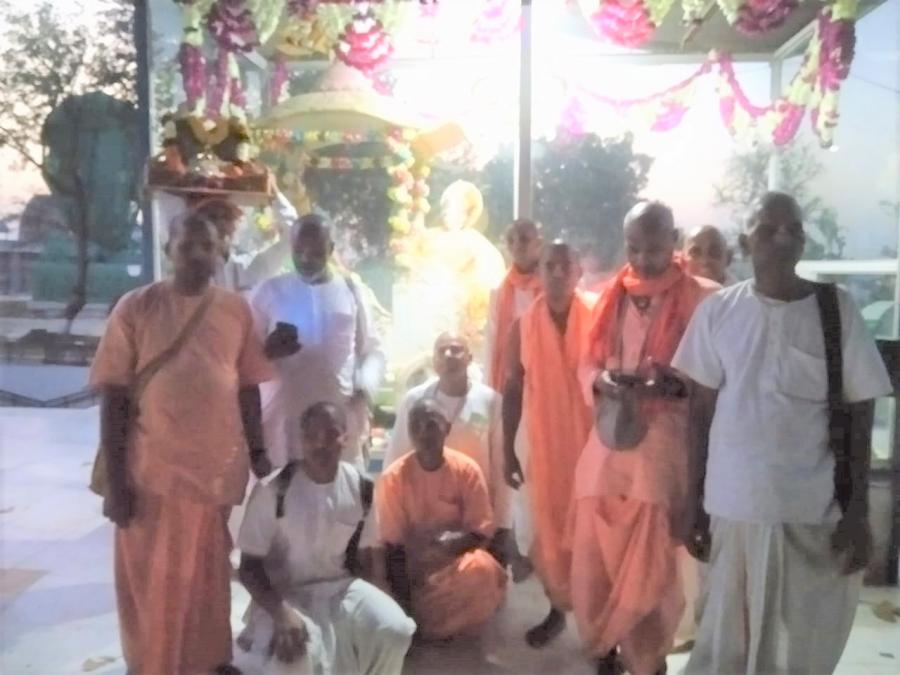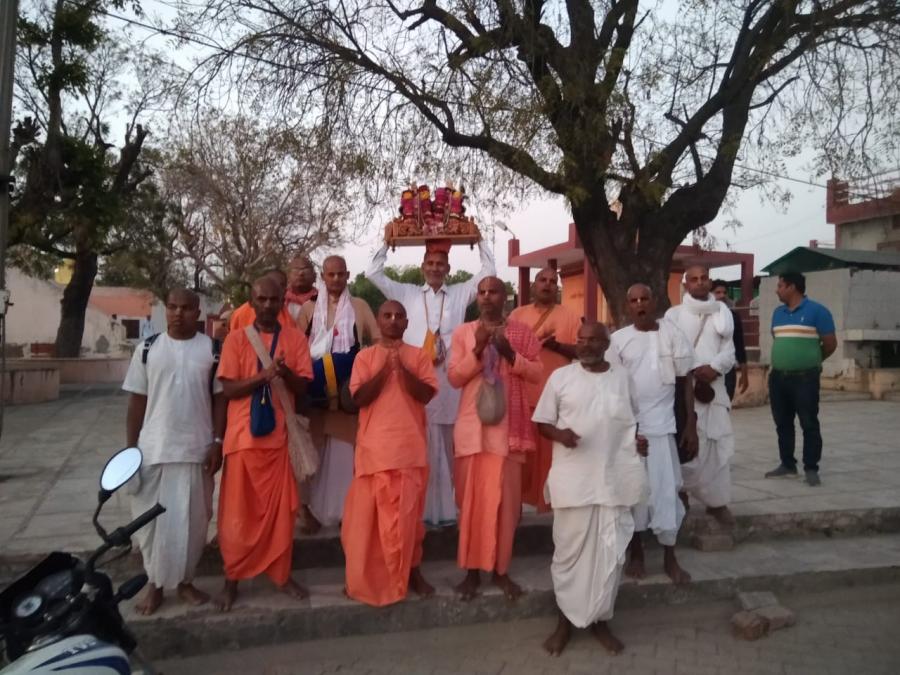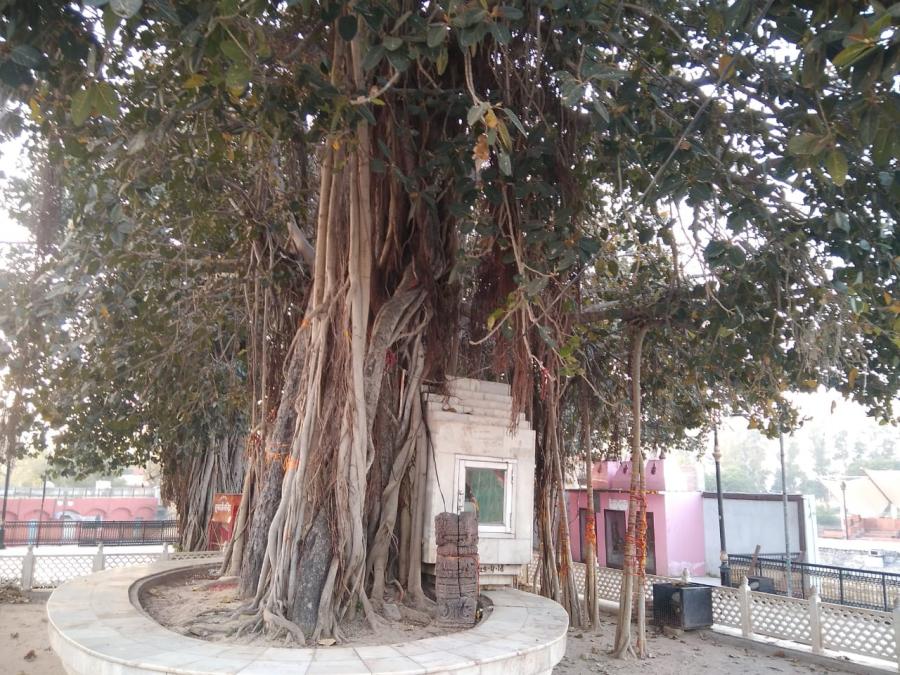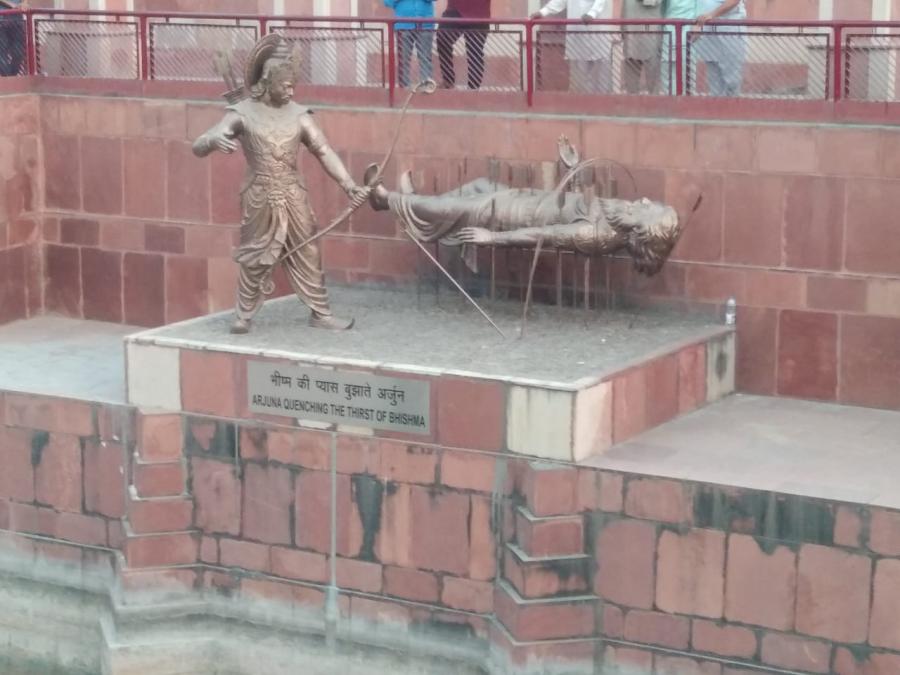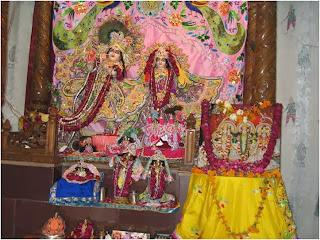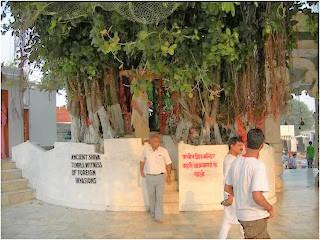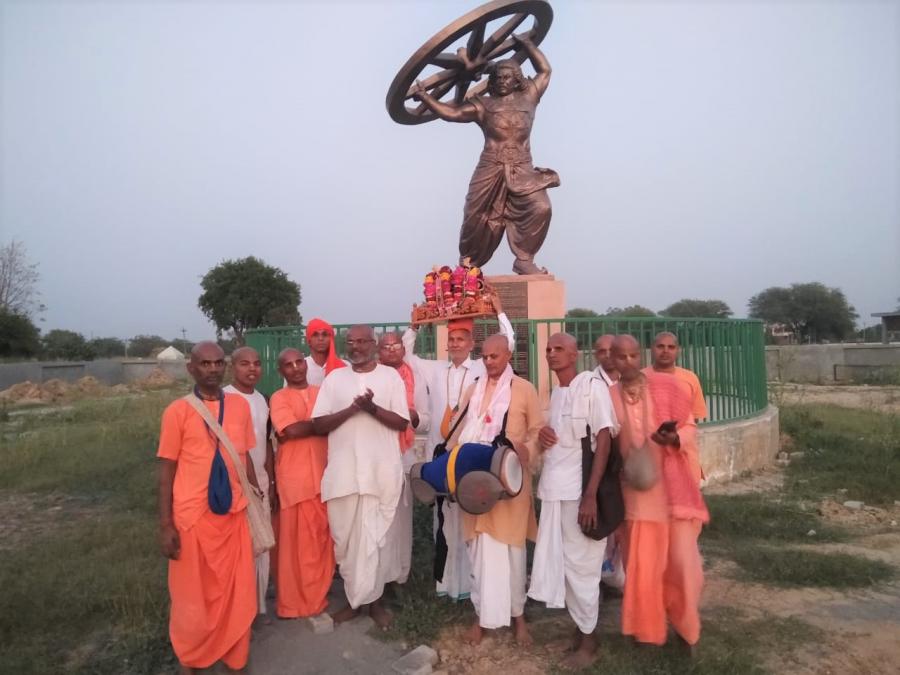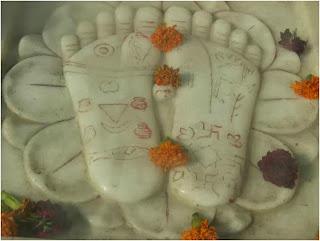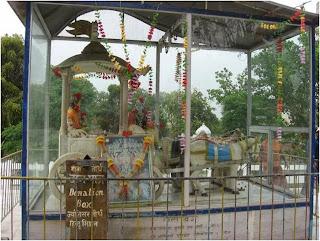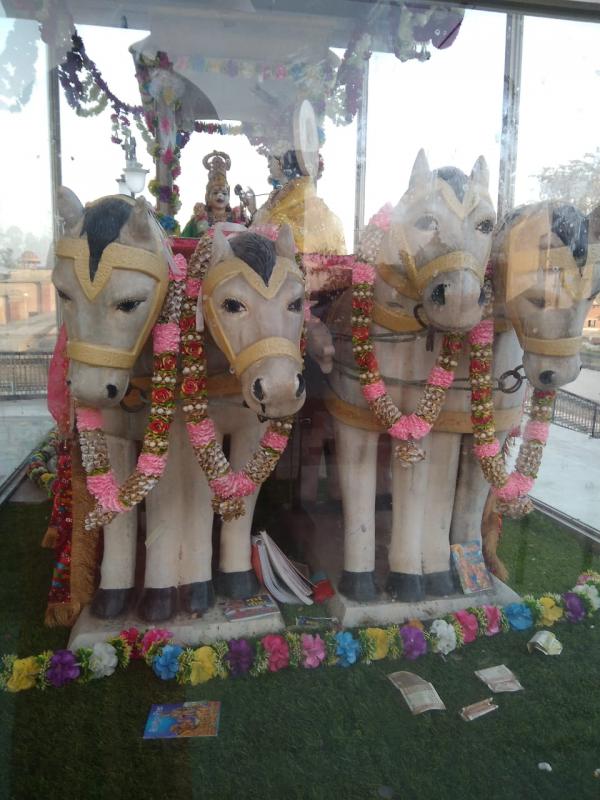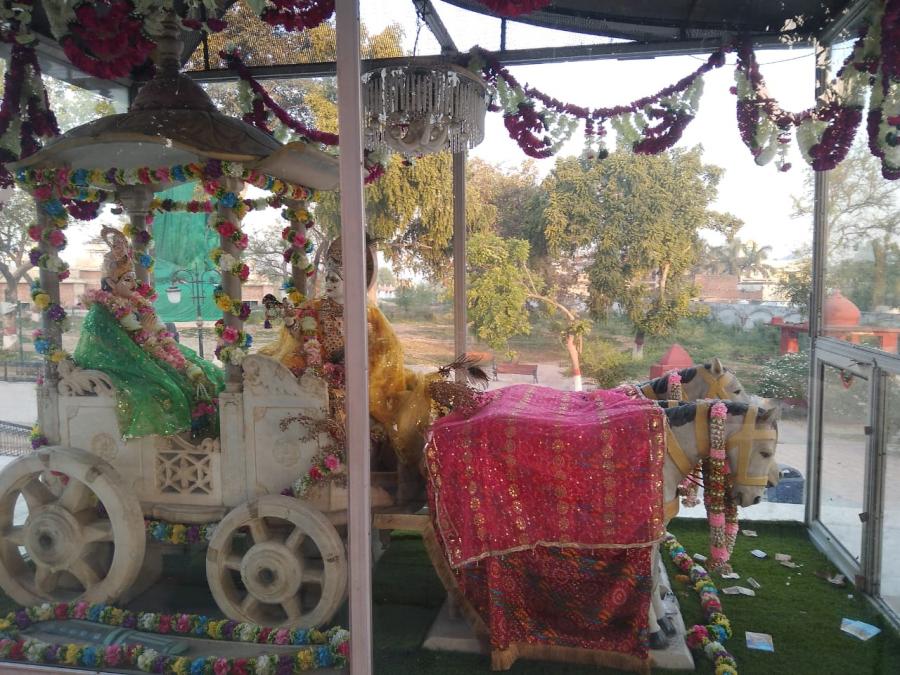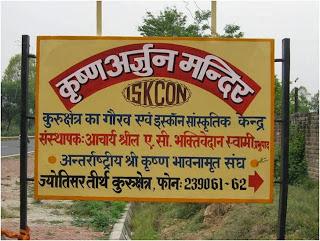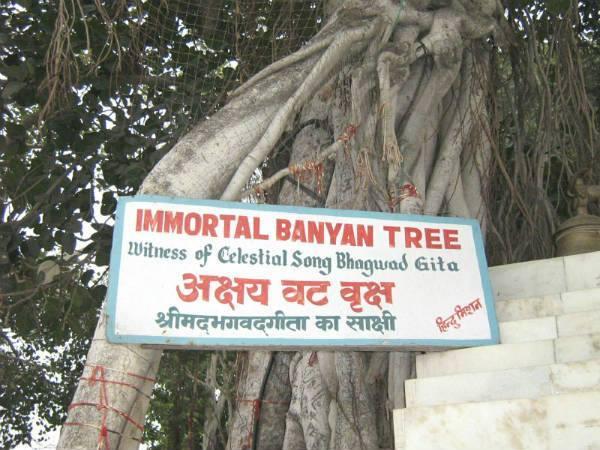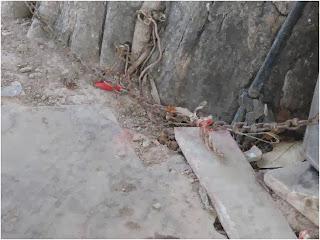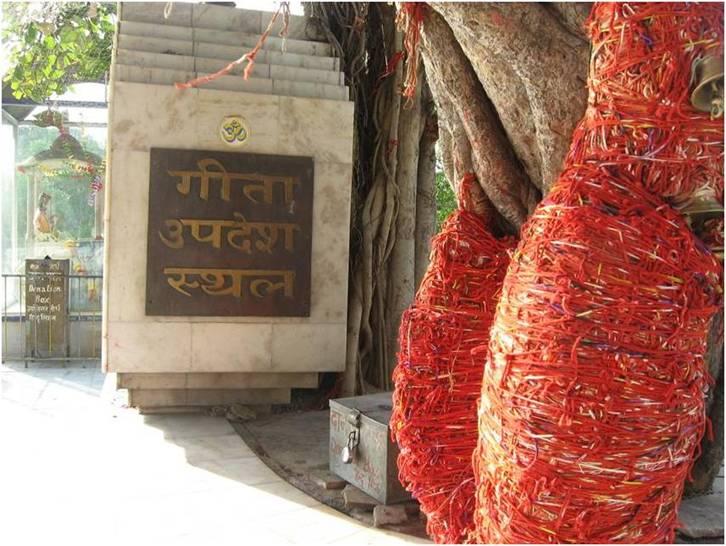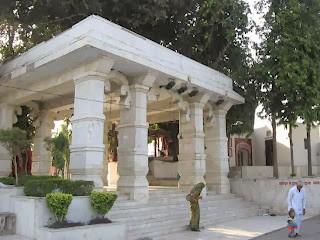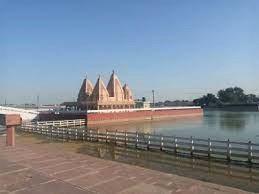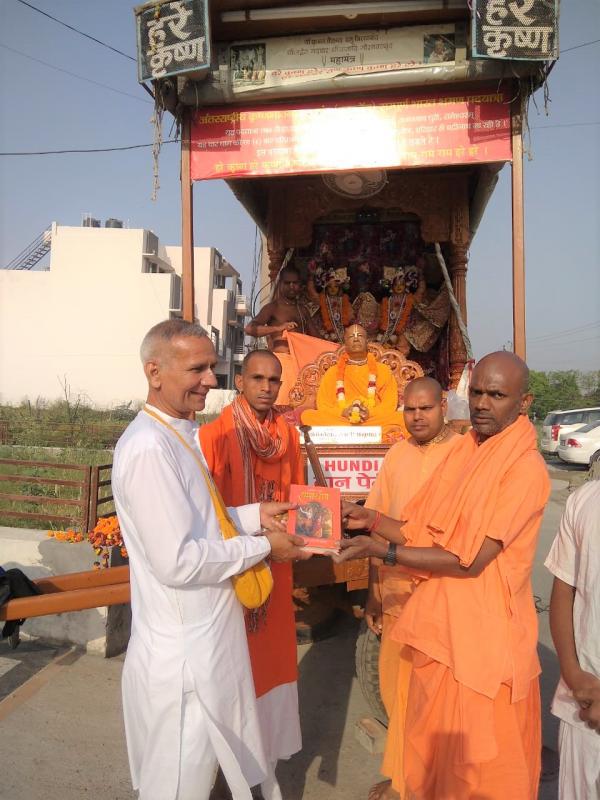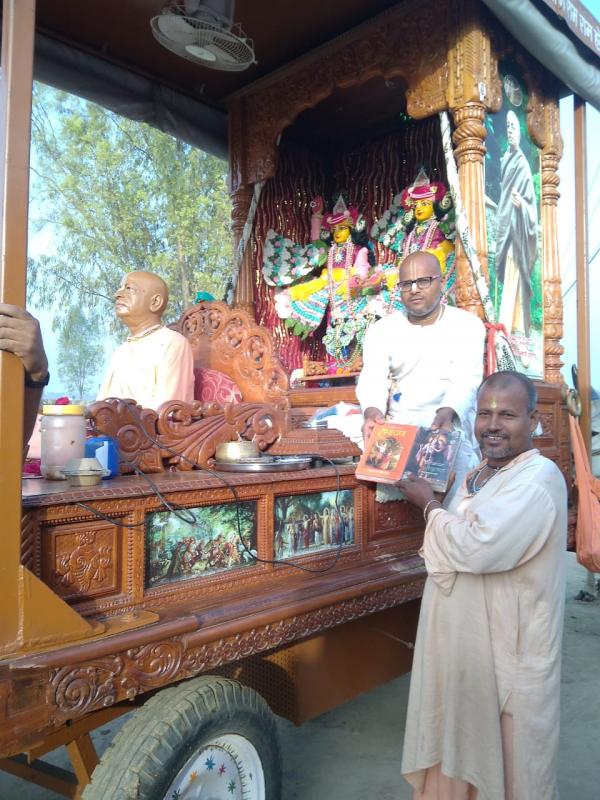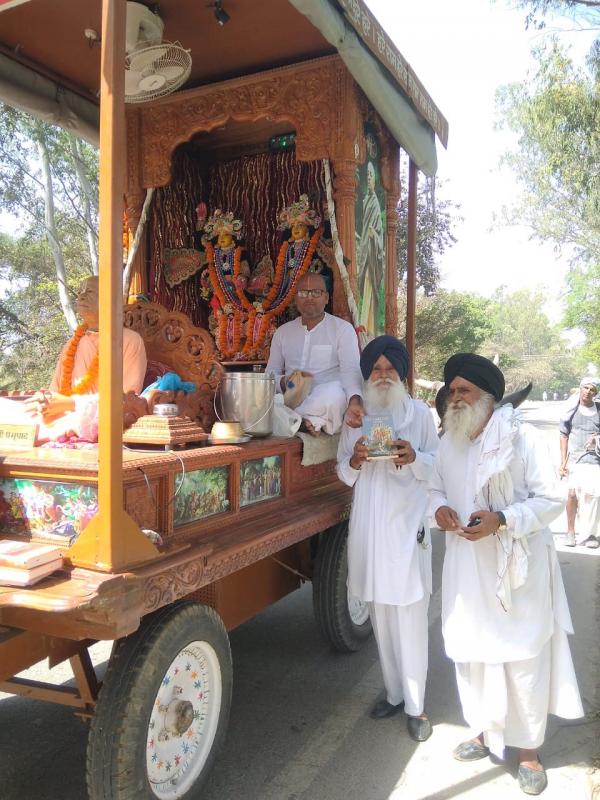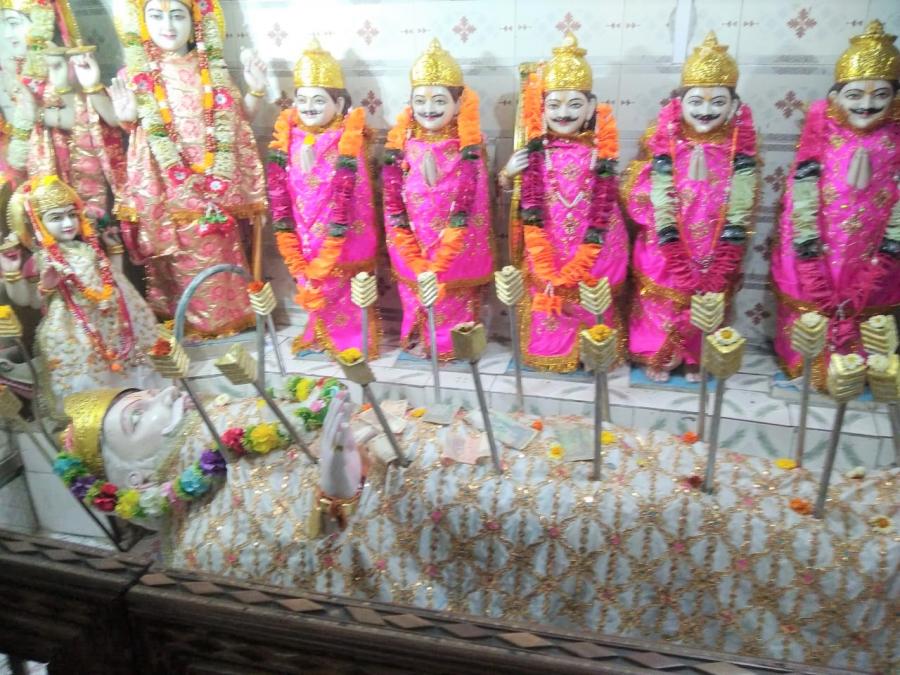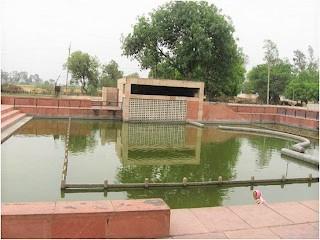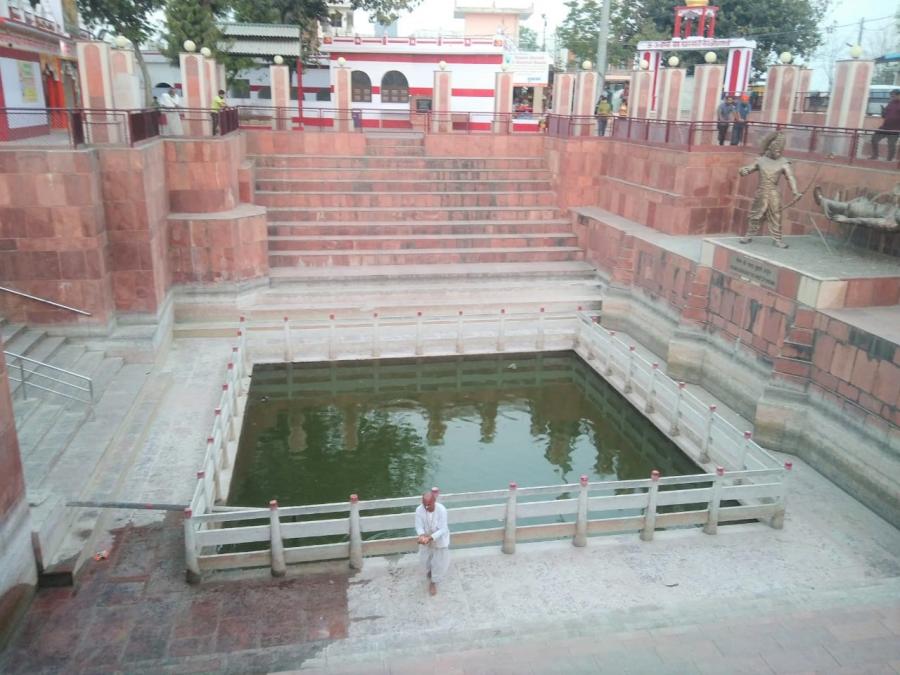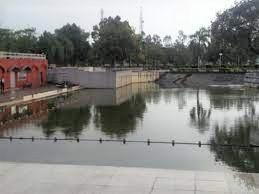By Acarya dasa, All-India Padayatra leader
On April 1, 2022, the All-India Padayatra reached Jyotisar on the banks of Jyotisar Sarovar 5km east of the city of Kurukshetra, also known as Dharmakshetra.
There is mention of Kurukshetra in the first sloka of the Bhagavad-gita:
dhṛitarāśhtra uvācha
dharma-kṣhetre kuru-kṣhetre samavetā yuyutsavaḥ
māmakāḥ pāṇḍavāśh chaiva kim akurvata sañjaya
Dhritarashtra said: O Sanjay, after my sons and the sons of Pandu assembled in the place of pilgrimage at Kurukshetra, desiring to fight, what did they do?
Jyotisar is the very spot where Lord Krishna preached the Bhagavad-gita to Arjuna and is aptly called Gitopdesh. As you enter the courtyard you can see verses of the Bhagavad-gita inscribed on the walls. The most sacred spot is under an ancient banyan tree (immortal banyan) on a raised plinth that our spiritual master, Lokanath Maharaja, says heard the sermon from the Lord’s lotus mouth, and next to it a beautiful marble chariot with a statue of Krishna preaching to Arjuna.
It was here at dharma-kṣhetre, the land of dharma (virtuous conduct), that the two armies of Kuru and Pandavas had gathered on the battlefield prepared to fight a war. Kurukshetra is described as kurukṣhetraṁ deva yajanam in the Shatapath Brahman, the Vedic textbook detailing rituals. It means “Kurukshetra is the sacrificial arena of the celestial gods.” Hence, it was regarded as the sacred land that nourished dharma.
We were very happy to reach this holy dhama and I wish we all could feel the presence of the sacred slokas of the Bhagavad-gita in the air – they must be there in the atmosphere for sure. On December 1, 1975, Srila Prabhupada went to Kurukshetra with several disciples to visit the less-developed Jyotisar. He walked about thoroughly inspecting the area and after ten minutes asked the devotees what they thought of it. They all expressed enthusiasm about the place, which they sensed as spiritually vibrant. Deep, timeless wisdom and serenity seemed to permeate the atmosphere – people there can still hear the sound of conch shells in the night. At this place the Lord said “sarva dharman parityajya” and it has been preached all over by Srila Prabhupada. Jai Srila Prabhupada.
At Nakartari, between Jyotisar and Kurukshetra city, we took darshan of the place where Bhismadev was on the bed of arrows. Two statues have been installed there, Arjuna and Bhishama’s sarsaiya (deathbed). Arjuna’s Banganga statue is 9ft (275cm) tall and depicts him in the posture of shooting an arrow to bring out the underground holy spring water for the thirsty Bhishma. The pond is still there.
We also went to Abhimanyupur village where Arjuna’s son, Abhimanyu, died in the Mahabharata war during the chakravyūha battle. An 18ft (550cm) statue of Abhimanyu with a chariot wheel carried in both hands above his head depicting his stance during the battle has been installed by the Kurukshetra Development Board at the place where he was killed.
Then we went to ISKCON’s Kurukshetra temple, the Sri Sri Radha-Radhakant mandir, where our accommodation had been arranged. Temple president Sakshi Gopal dasa, a disciple of Gopal Krishna Maharaja, and his family were pleased to receive us. They had been very helpful when we were here in 2012 and Sakshi Gopal has stayed in touch with us since.
The next day we went to Brahma Sarovar in old Kurukshetra city (also known as Sthanishwar, the place of God). At 3600ft long (1100m), 1500ft broad (450m), and 45ft deep (14m) Brahma Sarovar is one of Asia’s largest man-made ponds. It’s believed that Lord Brahma created the universe from the land of Kurukshetra after performing a huge yajna. Being sacred to Hinduism, Brahma Sarovar is worshipped twice a day, at sunrise and sunset.
Hundreds of thousands of pilgrims come here during a solar eclipse to have the privilege of taking a dip in the sacred tanks of Brahma Sarovar and Sannihit Sarovar. A holy dip in these tanks during the eclipse gives the merit of performing 1000 Ashwamedha yajnas. It is said that whenever a solar eclipse is visible at this location all the sacred places and pilgrimages assemble here and thus one gets the merits of all the tirthas at one place. Lord Sri Krishna along with His family came from Dwarka to participate in the fair of a solar eclipse at Kurukshetra as well as gopis from Vrindavan.
We spent most of the day at a Gaudiya matha at Brahma Sarovar and that evening had a house programme and performed kirtan at Sakshi Gopal’s residence in Kurukshetra.
The visit to Kurukshetra dhama was a wonderful experience.

